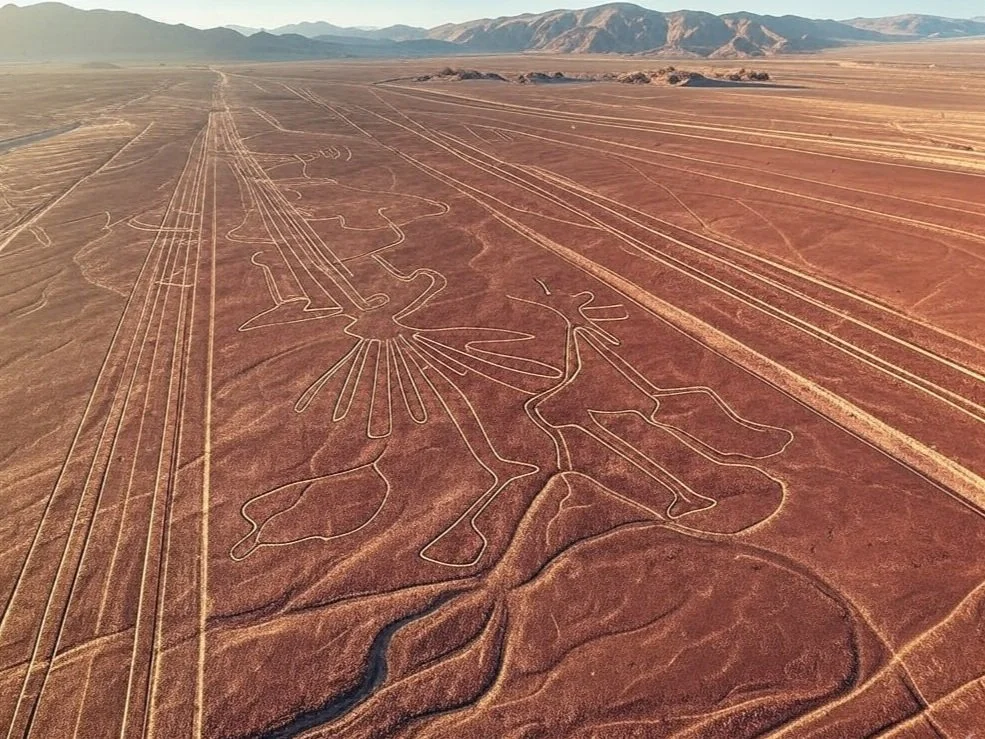The Mysterious Nazca Lines: How Were They Made?
Introduction
The Nazca Lines, a collection of enormous geoglyphs etched into the arid plains of southern Peru, remain one of the most fascinating and enigmatic archaeological discoveries in history. Created by the Nazca culture between 500 BCE and 500 CE, these lines cover hundreds of square kilometers and depict a variety of figures, including animals, plants, and geometric shapes. Despite numerous studies, the exact methods and purpose behind their construction continue to intrigue researchers. This article explores the techniques used to create the Nazca Lines and examines prevailing theories regarding their function.
Geological and Environmental Context
The Nazca Desert provides an ideal environment for the preservation of the lines. The region experiences minimal rainfall, which prevents erosion, while the dark, iron-oxide-coated surface contrasts sharply with the lighter subsoil beneath. This contrast allows the lines to remain visible for centuries. The stability of the desert floor, combined with the lack of significant vegetation, ensured that the lines remained largely undisturbed over time.
Methods of Construction
The Nazca Lines were created using a relatively simple yet precise technique. Researchers believe the ancient Nazca people employed the following methods:
Clearing the Surface: The lines were made by removing the dark, weathered stones from the desert surface, revealing the lighter-colored earth beneath.
Use of Basic Tools: Archaeologists have found evidence suggesting the Nazca used wooden stakes, string, and rudimentary tools to measure and design the geoglyphs with remarkable accuracy.
Surveying Techniques: Studies suggest that the Nazca may have used an early form of geoglyph mapping by establishing grid patterns and sightlines. Some scholars propose that rudimentary compasses and sighting devices could have helped maintain straight lines and symmetrical figures.
Collaborative Efforts: Given the scale of the designs, construction likely involved coordinated labor, with different groups assigned to specific sections of the figures.
Theories on Purpose and Function
While the exact purpose of the Nazca Lines remains a subject of debate, several leading theories have emerged:
Religious or Ritualistic Significance: Many researchers believe the lines were created as part of religious ceremonies, possibly serving as pathways for processions or offerings to deities related to water and fertility.
Astronomical Alignments: Some scholars argue that the geoglyphs align with celestial events, suggesting they may have functioned as a massive astronomical calendar.
Water Cult and Hydrological Significance: Given the arid conditions of the Nazca region, some theories propose that the lines were linked to water rituals, possibly marking underground water sources or serving as prayers for rainfall.
Communication with Deities: A more speculative theory suggests that the lines were meant to be viewed by gods or extraterrestrial beings, as their enormous scale makes them most visible from the air.
Conclusion
The Nazca Lines continue to captivate scholars and the public alike. While the precise methods and motivations behind their creation remain speculative, ongoing research and technological advancements provide new insights into these remarkable geoglyphs. Whether religious artifacts, astronomical markers, or symbols of social organization, the Nazca Lines stand as a testament to the ingenuity and cultural depth of the ancient Nazca civilization.







